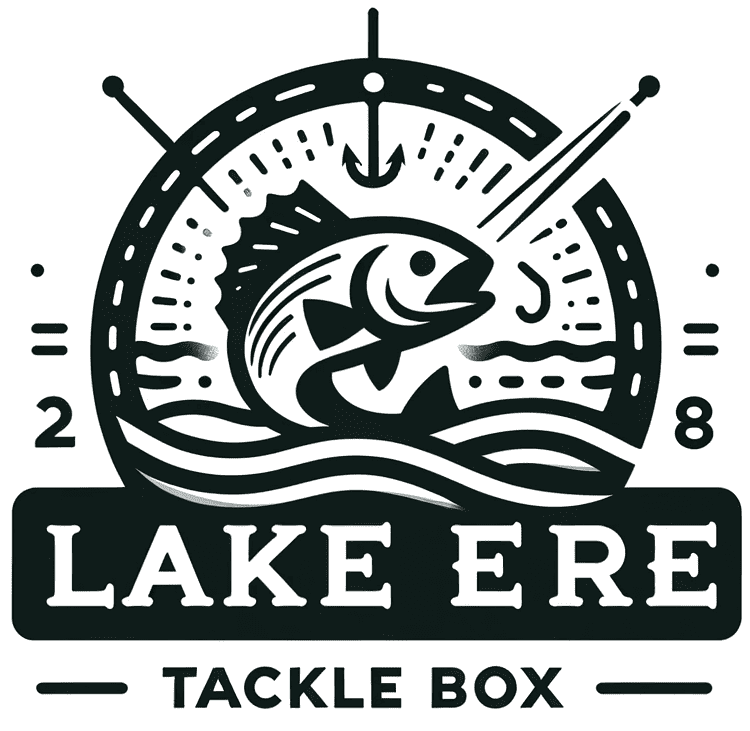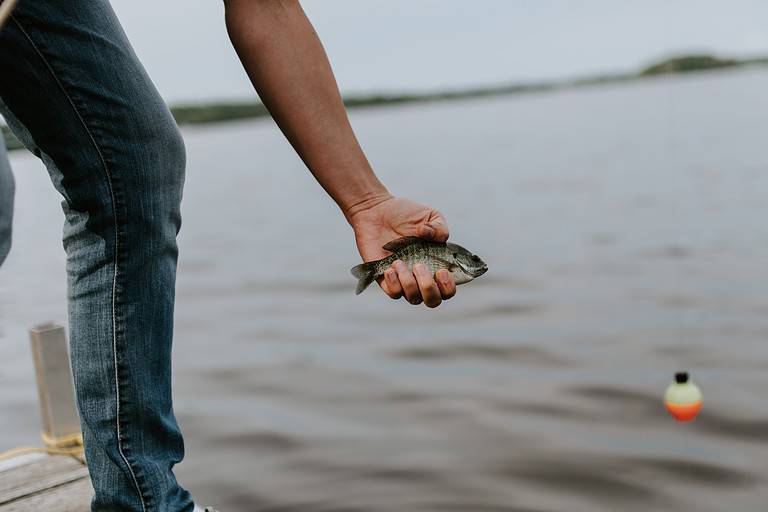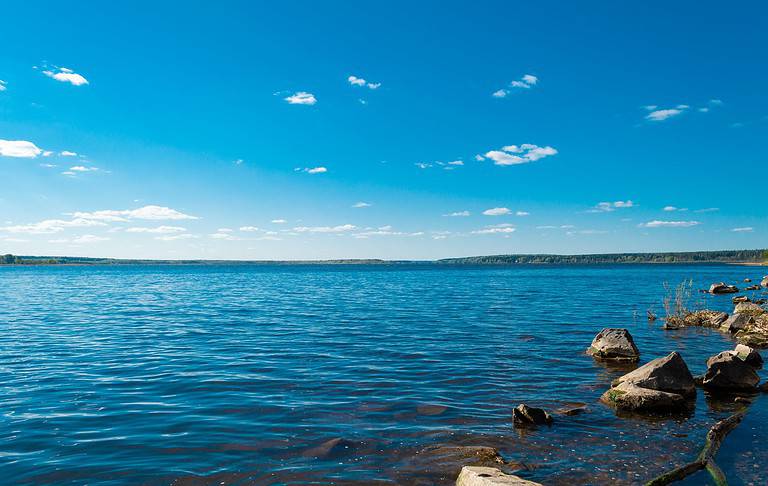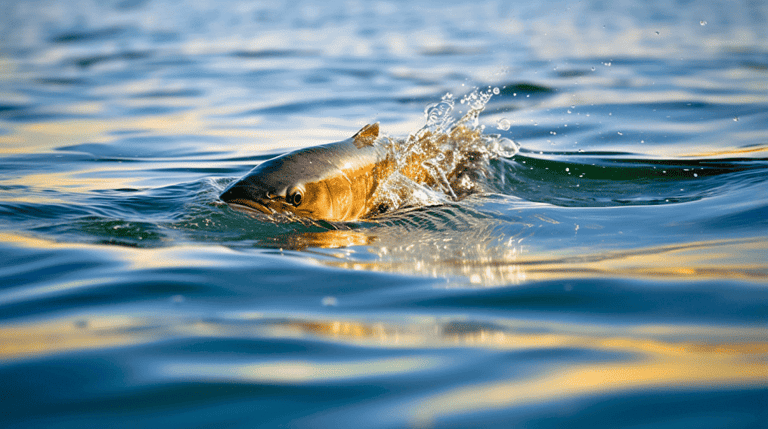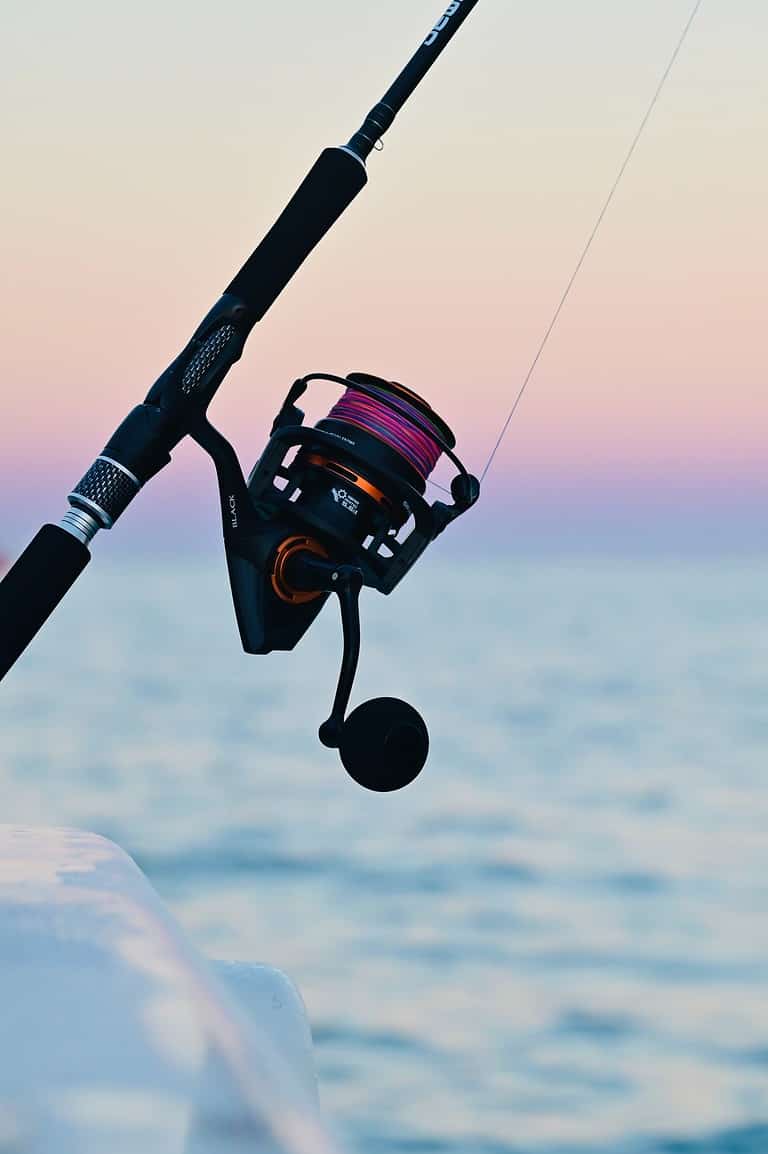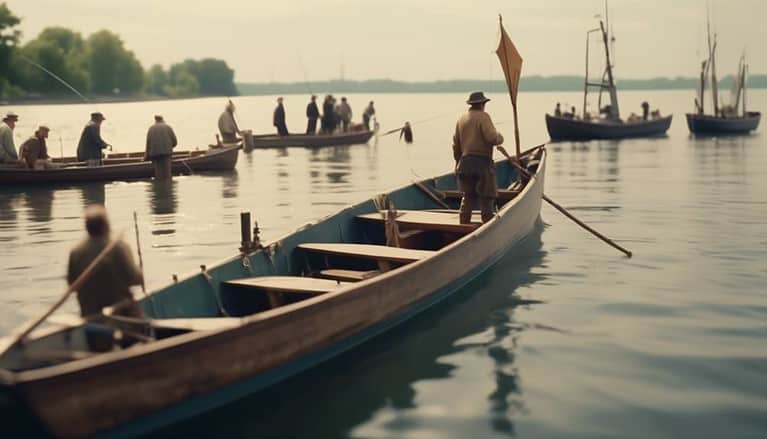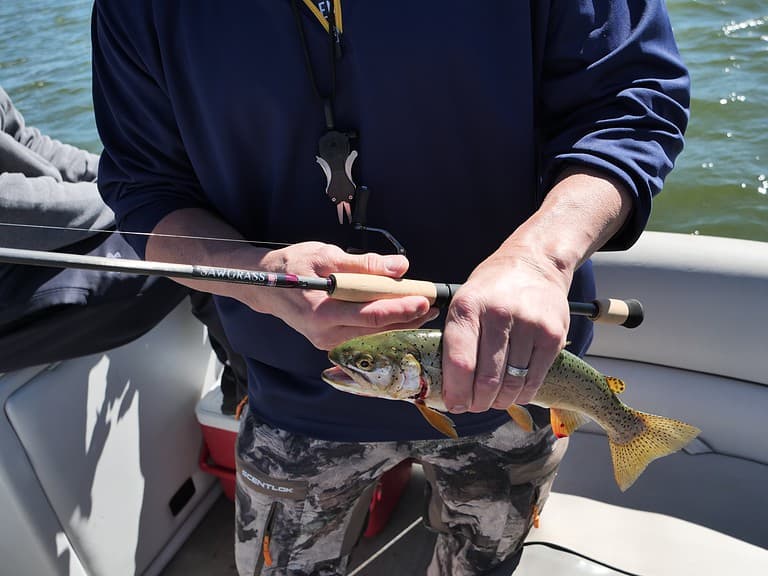Lake Erie Conservation: The Angler’s Role
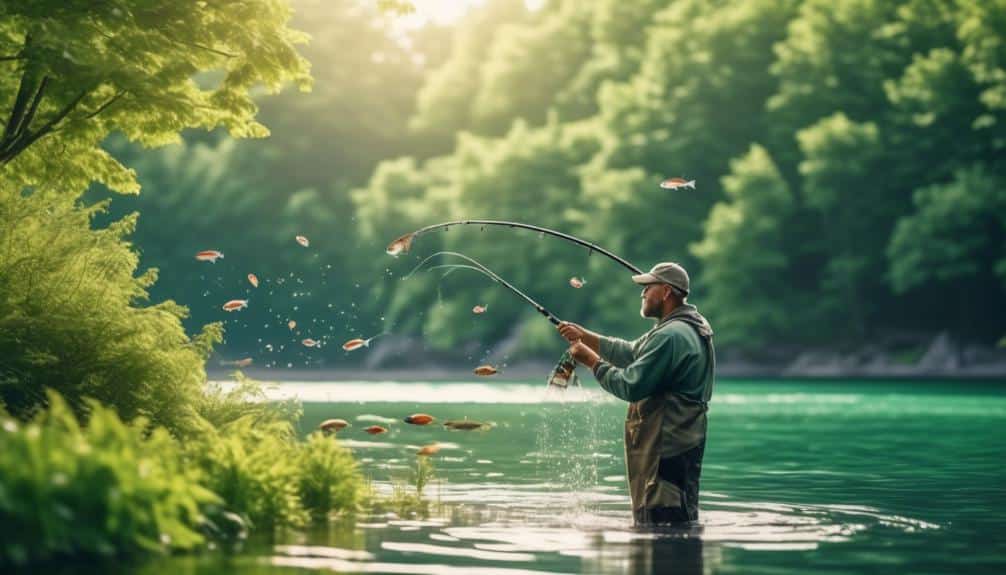
Did you know that Lake Erie’s walleye population has seen a remarkable resurgence in recent years, thanks in part to the diligent efforts of local anglers?
As an angler, you’re not just enjoying the thrill of the catch; you’re a pivotal player in the lake’s conservation story. By adhering to catch limits, size restrictions, and participating in closed seasons, you’re directly contributing to the sustainable management of this vital fishery.
Beyond just following regulations, your role extends to supporting stocking programs and engaging in responsible fishing practices that ensure the health and abundance of Lake Erie’s fish populations for generations to come.
Yet, the path to maintaining this ecological balance is fraught with challenges, including battling pollution and invasive species, which makes your role all the more critical.
Let’s explore how your continued dedication as an angler can make a difference in this ongoing conservation effort, and why the lake’s future might just depend on it.
Key Takeaways
- Pollution control efforts are crucial for the future of Lake Erie, and collaboration between government agencies, scientists, and community stakeholders is essential.
- Invasive species like zebra and quagga mussels disrupt the natural balance of Lake Erie, and habitat protection, monitoring, and research are key components in combating them.
- Anglers serve as citizen scientists in preserving Lake Erie’s ecosystem by collecting data on fish populations, monitoring water quality, and noting environmental conditions.
- Habitat restoration initiatives, targeting wetlands, stream health, and spawning and feeding grounds, are critical for Lake Erie’s future, and collaboration between government agencies, conservation organizations, and local communities is key.
The Pollution Problem
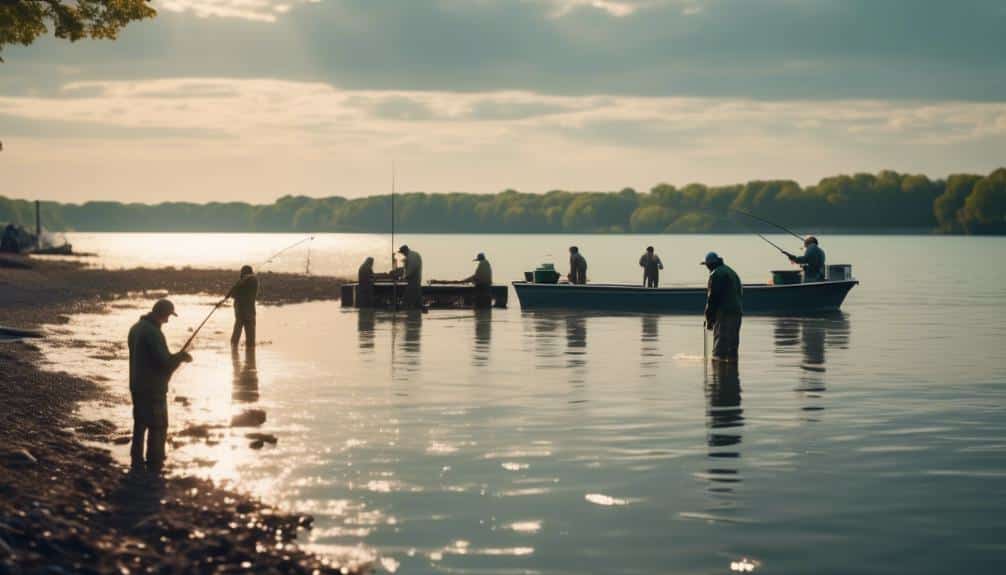
Pollution in Lake Erie, from industrial, agricultural, and urban sources, poses a significant challenge to its ecosystem, demanding urgent and effective solutions. This body of water, once teeming with life, now faces threats that compromise its water quality and the well-being of species that call it home.
Industrial runoff, alongside agricultural practices, has led to harmful algal blooms, drastically affecting the lake’s biodiversity and habitat. These blooms, primarily fueled by excessive nutrients such as phosphorus and nitrogen, create dead zones where aquatic life can’t survive.
Efforts to combat this pollution have focused on reducing nutrient runoff and adopting best management practices in agriculture. It’s not just about cutting down on phosphorus; nitrogen and sediment also play crucial roles in the lake’s declining health. Collaboration is key, with government agencies, scientists, and community stakeholders coming together to formulate comprehensive strategies aimed at pollution control and sustainable land use.
Conservation efforts in Lake Erie are multifaceted, requiring a concerted push towards not only preserving the water quality but also rehabilitating the ecosystem as a whole. The path forward is clear: tackling the pollution problem through collective action and innovative solutions is imperative for the lake’s future.
Invasive Species Battle
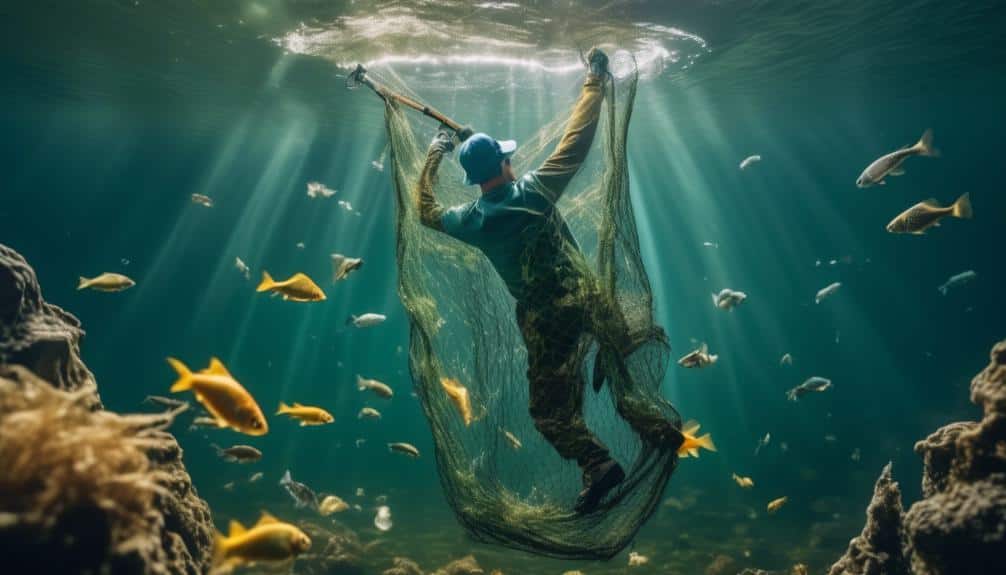
How are invasive species like zebra and quagga mussels reshaping the ecosystem of Lake Erie, and what’s being done to combat their spread?
These creatures are at the heart of the invasive species battle, altering the lake’s natural balance. They filter vast amounts of water, removing crucial nutrients and disrupting the food chain, which directly impacts the Lake Erie Walleye population, a species vital to both the ecosystem and local angling communities.
The fight against these invasive mussels involves a multifaceted approach focusing on habitat protection, monitoring, and research. Scientists and conservationists are working tirelessly to understand the extent of the problem and devise effective management strategies.
Meanwhile, efforts to limit their spread are in full swing, with guidelines and regulations in place for anglers and boaters to follow, ensuring they don’t inadvertently transport these species to new areas.
You, as an angler, play a pivotal role in this conservation effort. By adhering to these regulations and participating in habitat protection initiatives, you’re contributing to safeguarding Lake Erie’s biodiversity. It’s a collective battle against invasive species, and every action counts.
Anglers as Citizen Scientists
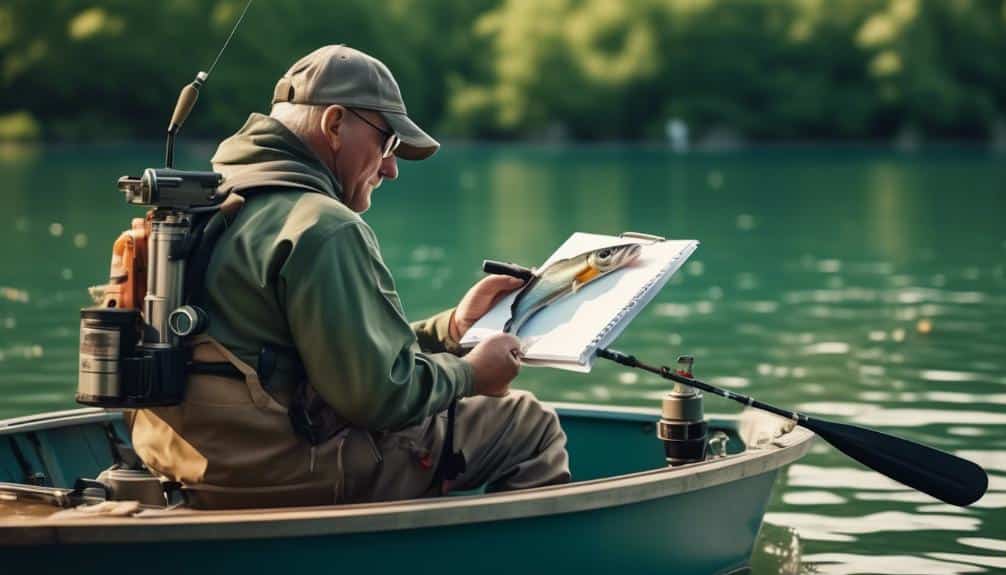
Building on the battle against invasive species, it’s crucial to recognize the significant role you, as an angler, serve as a citizen scientist in preserving Lake Erie’s ecosystem. Your involvement isn’t just about enjoying the thrill of walleye fishing; it extends to a broader responsibility. By becoming active participants in monitoring the lake’s health, you’re at the forefront of conservation efforts.
Here’s how your role unfolds:
- Data Collection:
- Fish Populations: Tracking walleye and other species’ numbers gives insights into their health and breeding success.
- Water Quality: Your observations help detect pollution or changes affecting the habitat.
- Environmental Conditions: Noting alterations in the ecosystem can signal emerging threats.
Your contributions are invaluable. They aid in:
- Identifying trends that mightn’t be immediately obvious to scientists.
- Swiftly responding to invasive species or pollution, thanks to your on-the-ground reports.
- Enhancing the understanding of Lake Erie’s delicate balance, ensuring walleye fishing remains a sustainable activity for years to come.
As anglers as citizen scientists, you’re not just fishing; you’re guardians of Lake Erie, playing a pivotal role in its future. Your engagement and stewardship are key to maintaining its health and biodiversity.
Habitat Restoration Initiatives
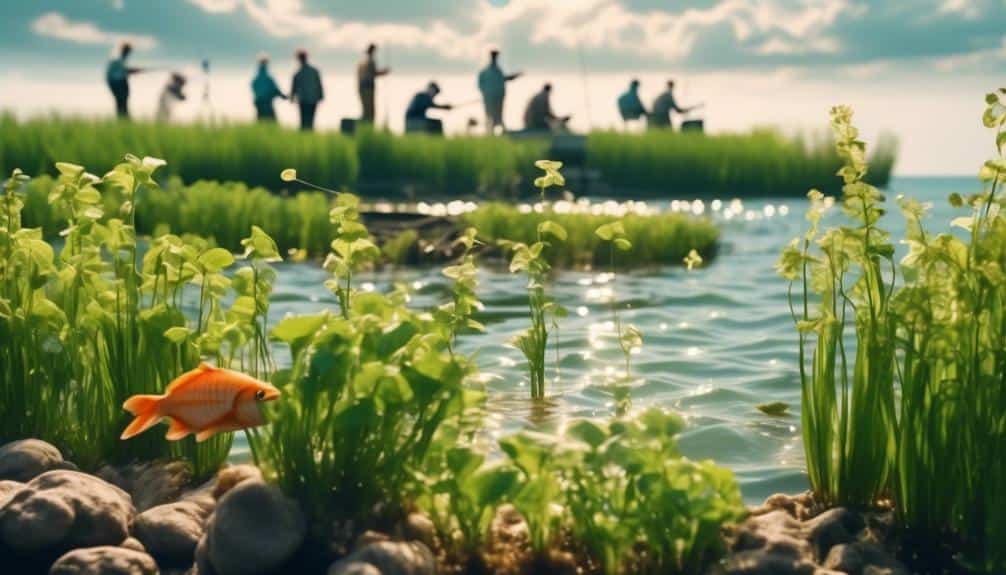
Why are Habitat Restoration Initiatives critical for Lake Erie’s future?
It’s simple: without a healthy habitat, the diverse ecosystem within Lake Erie can’t thrive. These initiatives are the backbone of conservation efforts in Lake Erie, aiming to enhance and restore the natural habitats crucial for fish and wildlife in the watershed.
Through projects designed to rejuvenate wetlands, bolster stream health, and improve the quality of spawning and feeding grounds, these initiatives target the very foundation of a thriving aquatic ecosystem. But it’s not just about the fish; it’s also about combating erosion, managing nutrient runoff, and safeguarding critical habitats.
This multifaceted approach ensures the long-term health and sustainability of Lake Erie.
Collaboration is key in these efforts. Government agencies, conservation organizations, and local communities come together, pooling resources and expertise to make significant strides in habitat restoration. This collective action underscores the importance of community involvement in conservation.
Moreover, habitat restoration initiatives complement other conservation strategies, such as walleye stocking programs, by providing a healthier environment for stocked and native species alike. In essence, these initiatives are creating a sustainable future for Lake Erie, where both people and nature can flourish.
Promoting Sustainable Fishing Practices
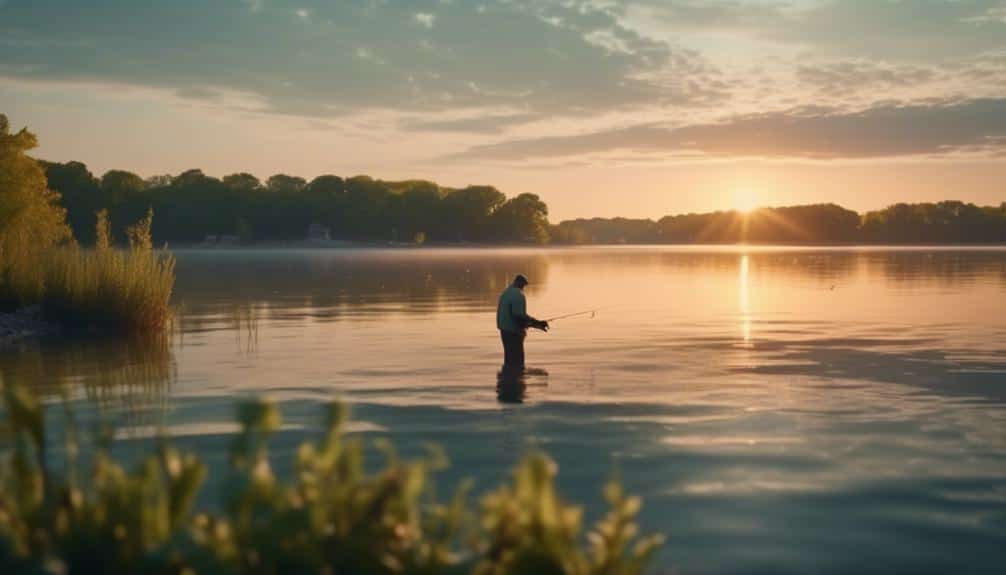
While habitat restoration initiatives lay the groundwork for a thriving Lake Erie ecosystem, it’s equally crucial to focus on promoting sustainable fishing practices to ensure the long-term vitality of its fish populations. As an angler, you play a pivotal role in this conservation effort. By adopting responsible behaviors, you directly contribute to the health and sustainability of Lake Erie’s aquatic life, especially the renowned walleye fishery.
To make a significant impact, consider these strategies:
- Respect Regulations
- Abide by catch limits and size restrictions.
- Adhere to closed seasons to prevent overexploitation.
- Practice Responsible Fishing
- Engage in catch and release to maintain robust fish populations.
- Support the protection of crucial spawning grounds.
- Collaborative Conservation
- Work alongside government agencies and scientists.
- Prioritize habitat protection and pollution control.
Promoting sustainable fishing practices isn’t just about following rules; it’s about securing the future of Lake Erie’s walleye fishery and other aquatic species. Every action you take, no matter how small, plays a part in this larger conservation narrative. By engaging in sustainable angling practices, you’re not just fishing for today—you’re ensuring that future generations can enjoy the bountiful waters of Lake Erie.
Frequently Asked Questions
What Organization Protects Lake Erie?
You’re wondering which organization shields Lake Erie from pollution challenges, ensuring its wildlife thrives? It’s the Great Lakes Restoration Initiative, focusing on cutting nutrient runoff and boosting community engagement to tackle environmental hurdles.
How Does Lake Erie Help the Environment?
Lake Erie boosts the environment by supporting fish habitats, aiding in water purification, and contributing to climate regulation. You’ll find it’s integral for local ecosystems, ensuring biodiversity and helping maintain ecological balance.
How Was Lake Erie Cleaned Up?
As the saying goes, “many hands make light work,” Lake Erie’s cleanup involved tackling pollution sources through legislative actions and community involvement. It was a collective effort to reduce contamination and restore the lake’s health.
Why Was Lake Erie so Important?
Lake Erie’s crucial for its historical significance, economic impact, and recreational activities. It’s a lifeline, offering drinking water, supporting diverse species, and powering industries like fishing and tourism, making its preservation essential.
Conclusion
So, after wading through the murky waters of Lake Erie’s woes, from battling sea monsters (also known as invasive species) to playing detective with pollution, you, dear angler, emerge as the unsung hero.
Donning your cape of responsibility, you’ve turned fishing tales into conservation victories. Who knew that catching fish could save them?
Remember, every walleye owes its life to you. Keep casting your line for the greater good, one sustainable catch at a time.
Because without you, it’s just another fishy story.
